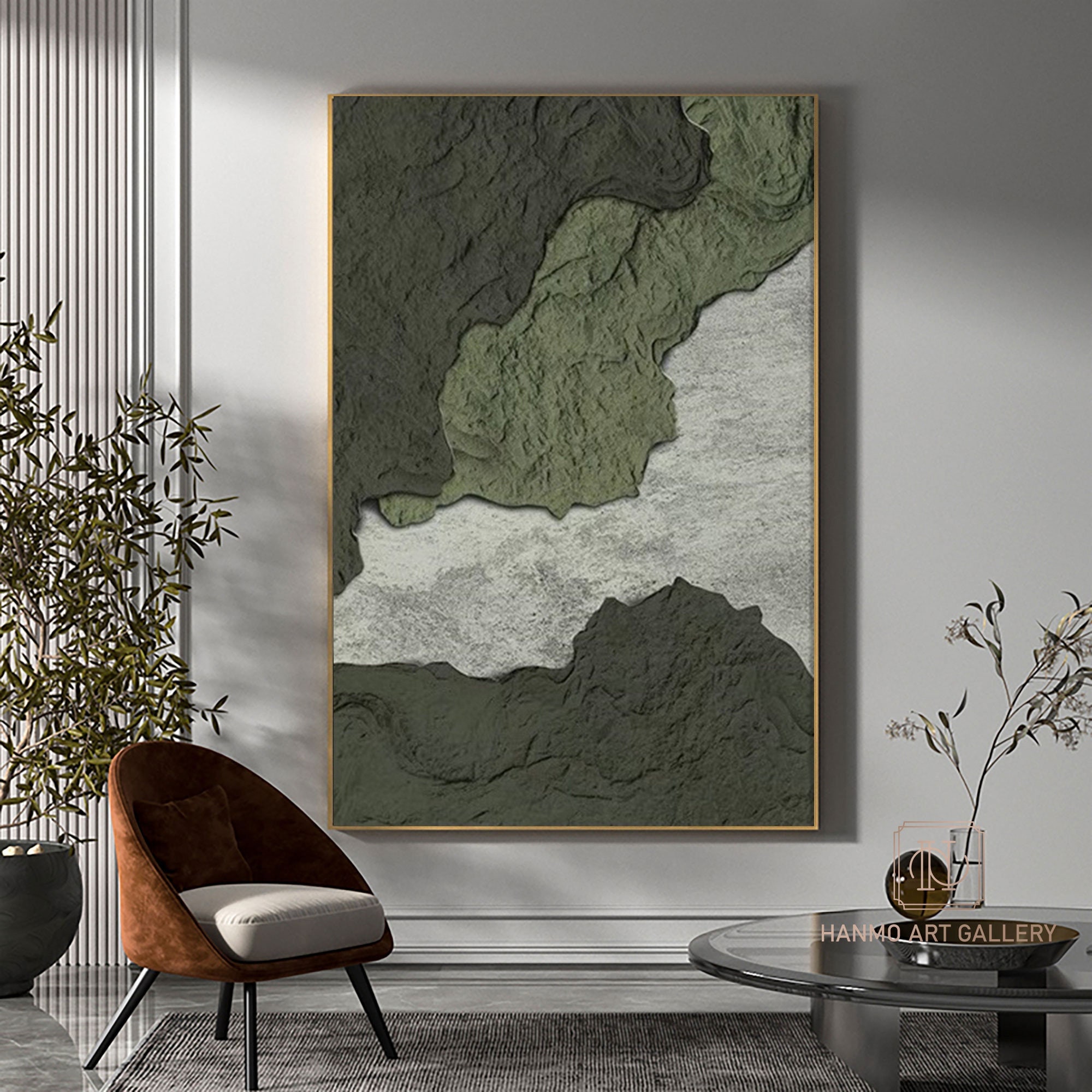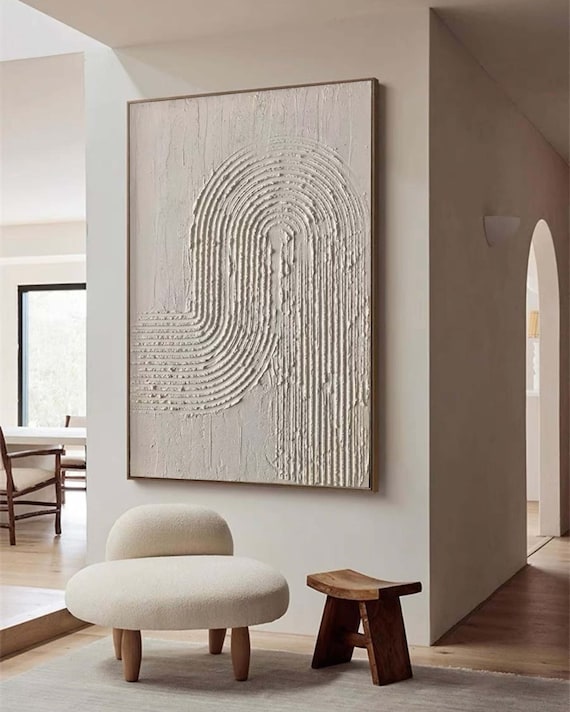Textured wall art decor has become an increasingly popular option for homeowners looking to elevate their interior design. As someone who has a passion for home decor and has experimented with various styles, I can attest to the profound impact that the right art piece can have on a space. In this article, we’ll delve into the different types of textured wall art, tips for selecting the right pieces, DIY ideas, and much more to help you create a stunning environment in your home.
What is Textured Wall Art Decor?
Textured wall art decor refers to artwork that incorporates various materials, patterns, and dimensions to create a tactile experience. This type of art takes advantage of textures to add depth and interest to walls, providing a sensory experience that flat artwork simply cannot achieve.
Why Choose Textured Wall Art?
- Visual Depth: Textured pieces create shadow and light effects that change the ambiance of a room.
- Unique Styles: There’s a vast array of designs, from abstract pieces to rustic wood art, catering to different tastes.
- Conversation Starters: These pieces often intrigue visitors, making them perfect for social gatherings.
Types of Textured Wall Art Decor
The world of textured wall art is diverse and rich with possibilities. Below are some popular types to consider for your home.
1. Canvas Textures
Canvas wall art comes in various forms, including acrylic pouring, mixed media, and traditional oil paintings that utilize thick paint applications to create a raised surface.

Pros and Cons of Canvas Textures
| Pros | Cons |
|---|---|
| Available in a wide range of styles | Can be expensive depending on the artist |
| Lightweight and easy to hang | Not suitable for all spaces due to fragility |
2. Wooden Wall Art
Wood adds an organic texture and warmth to any room. It can be crafted into geometric designs, rustic signs, or intricate carvings.

Pros and Cons of Wooden Wall Art
| Pros | Cons |
|---|---|
| Durable and long-lasting | Can be heavy, requiring strong mounting solutions |
| Unique grain patterns create individuality | May require maintenance to avoid warping |
3. Metal Wall Art
Metal wall art can be both modern and industrial, with varying finishes such as brushed, polished, or rusted. This type of decor provides a striking visual effect.

Pros and Cons of Metal Wall Art
| Pros | Cons |
|---|---|
| Highly durable and resistant to fading | Can be pricey depending on the design |
| Offers a contemporary look | Requires careful installation due to weight |
4. Textile Art
Textile art involves fabrics, threads, or fibers to create pieces that are often three-dimensional. Tapestries and fiber art hangings fall under this category.

Pros and Cons of Textile Art
| Pros | Cons |
|---|---|
| Softens the look of a space | May require special care during cleaning |
| Available in numerous colors and patterns | Pest susceptibility if not properly maintained |
Choosing the Right Textured Wall Art
When it comes to selecting the perfect textured wall art for your space, consider the following tips:

1. Identify Your Style
Take some time to define your personal style. Are you drawn to rustic designs, modern lines, or classic elegance? This will guide your decisions when browsing.
2. Consider the Color Palette
Ensure that the colors in the wall art complement your existing decor. Look at wall color, furniture, and other elements in the room to create a cohesive look.

3. Assess the Space
Evaluate the space where you want to display the art. Large pieces work well in more expansive areas, while smaller art can add interest to nooks.
4. Experiment with Arrangement
Before committing to where to hang your art, consider using painter’s tape to outline where you want to place the piece. This way, you can visualize it without making permanent changes.

DIY Textured Wall Art Ideas
If you’re feeling creative, why not create your textured wall art? It’s a fun way to personalize your space.
1. Textured Canvas Art
Use a canvas, acrylic paints, and various tools (sponges, brushes, or palette knives) to apply paint in a way that creates texture. Layer different colors for added depth.
2. Fabric Wall Hanging
Use pieces of fabric or yarn to create a tapestry. Knotting or weaving different textures can create a unique piece that reflects your personality.
3. Driftwood Art
Collect driftwood from a beach or local river and arrange it in an artistic manner on a canvas or wooden board for a rustic, nature-inspired piece.
4. Metal Sculpture
If you’re comfortable with tools, consider creating a simple metal wall sculpture from old tools or scrap metal. It adds an industrial touch to your decor.
Comparison of Textured Wall Art Materials
| Material | Visual Impact | Durability | Cost | Maintenance |
|---|---|---|---|---|
| Canvas | Medium | Medium | $$ | Low |
| Wood | High | High | $$$ | Medium |
| Metal | High | Very High | $$$ | Low |
| Textile | Medium | Low | $$ | High |
FAQs about Textured Wall Art Decor
What are some popular materials for textured wall art?
Common materials include canvas, wood, metal, and textiles, each offering a unique aesthetic and texture.
How can textured wall art enhance my home?
Textured wall art adds visual interest, depth, and a tactile experience to your decor, making spaces feel more dynamic and inviting.
Can I create my textured wall art?
Absolutely! DIY projects such as painted canvases, fabric hangings, and driftwood sculptures are great ways to personalize your space.
How do I hang textured wall art on my walls?
Use appropriate hardware based on the weight of the art. For heavier pieces, use wall anchors or screws to ensure it’s securely mounted.
Are there specific trends in textured wall art right now?
Currently, natural materials, eco-friendly designs, and oversized pieces are trending, reflecting a move toward sustainability and bold decorative statements.
Conclusion
Textured wall art decor can dramatically transform your living spaces, adding visual intrigue and a personal touch. As you consider integrating these elements into your home, remember to choose pieces that resonate with your style and enhance your environment. Whether you opt for store-bought art or take the DIY route, the key is to have fun and express yourself. Happy decorating!